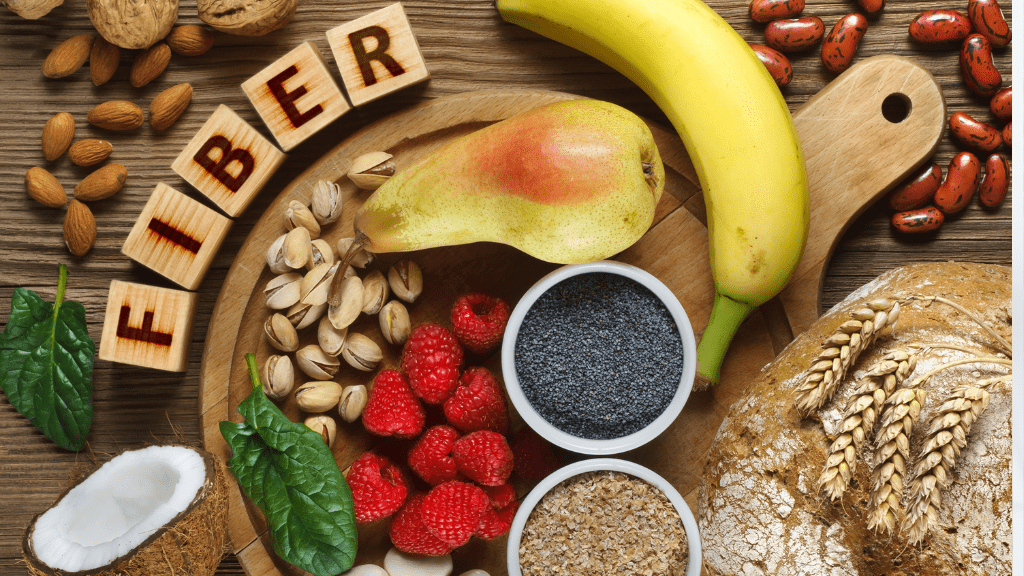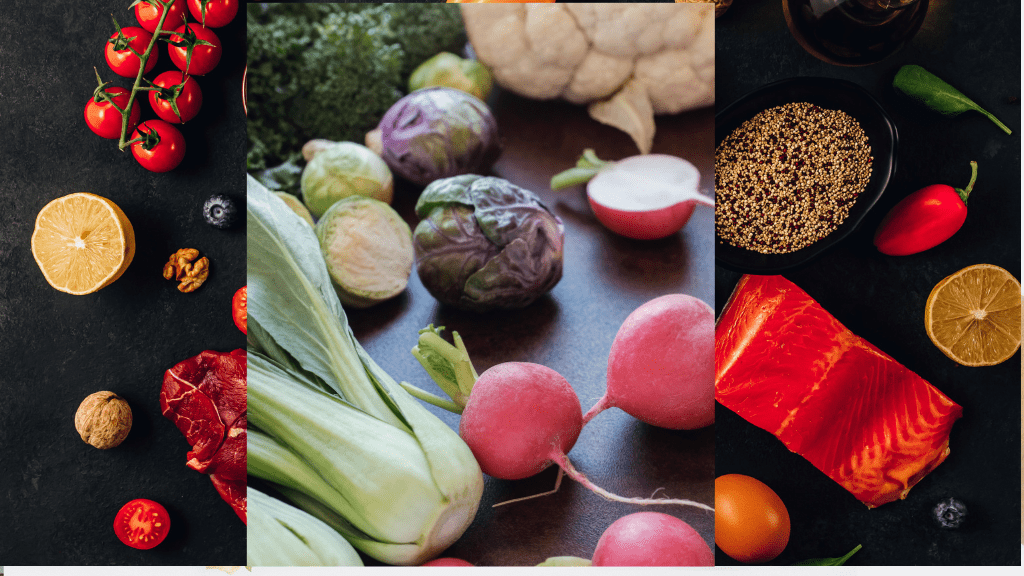The Impact of Farming Practices on the Fiber Content of Vegetables
Dietary fiber is a crucial component of a healthy diet, offering benefits such as improved digestion, better blood sugar control, and reduced risk of chronic diseases. While it's commonly known that vegetables are a significant source of fiber, the impact of farming practices on the fiber content of these vegetables is less frequently discussed. From conventional and organic farming to soil management and harvesting methods, various agricultural techniques can influence the fiber levels in vegetables. Understanding these impacts can help consumers make informed choices about their produce and support farming practices that promote nutritional quality.
1. Understanding Dietary Fiber and Its Importance
Dietary fiber is a type of carbohydrate that the body cannot digest. It is classified into two main types:
-
Soluble Fiber: This type dissolves in water and forms a gel-like substance in the digestive tract. It helps lower blood cholesterol and stabilize blood sugar levels. Sources include oats, beans, apples, and citrus fruits.
-
Insoluble Fiber: This type does not dissolve in water and adds bulk to the stool, aiding in regular bowel movements and preventing constipation. It is found in whole grains, nuts, and many vegetables.
Fiber-rich vegetables, such as broccoli, carrots, and sweet potatoes, are important for maintaining overall health. However, the fiber content of these vegetables can vary based on how they are grown and harvested.
2. Conventional vs. Organic Farming Practices
The debate between conventional and organic farming often centers around pesticide use, soil health, and environmental impact. But these farming practices also affect the nutritional quality of vegetables, including their fiber content.
-
Conventional Farming: Conventional farming typically involves the use of synthetic pesticides, herbicides, and fertilizers. These chemicals can alter soil health, potentially affecting the nutritional profile of vegetables. For instance, over-reliance on synthetic fertilizers can lead to nutrient imbalances in the soil, which may impact the fiber content of the produce. Additionally, conventional farming practices often prioritize high yields and pest resistance, which might come at the expense of the vegetable's nutritional density.
-
Organic Farming:Organic farming eschews synthetic chemicals in favor of natural methods, such as composting, crop rotation, and biological pest control. These practices promote soil health and biodiversity, which can enhance the nutritional quality of vegetables, including fiber content. Healthy, well-managed soil supports better plant growth and nutrient uptake, potentially leading to higher fiber levels in organic produce.
3. Soil Quality and Management
Soil quality is a fundamental factor influencing the fiber content of vegetables. Soil health affects plant growth, nutrient availability, and ultimately, the nutritional profile of the produce.
-
Nutrient-Rich Soil:Vegetables grown in nutrient-rich soil are more likely to develop higher fiber content. Healthy soil contains a balanced mix of minerals and organic matter, which supports robust plant growth and optimal fiber development. Organic farming practices, such as using compost and organic fertilizers, enhance soil fertility and structure, promoting higher fiber levels in vegetables.
-
Soil Degradation: Soil degradation, often caused by over-farming, erosion, and depletion of organic matter, can negatively impact the nutritional quality of vegetables. Poor soil health can lead to reduced fiber content and other essential nutrients. Implementing sustainable soil management practices, such as crop rotation and cover cropping, can help maintain soil health and preserve fiber content in vegetables.
4. Harvesting and Storage Techniques
The way vegetables are harvested and stored can also influence their fiber content. Harvesting methods and post-harvest handling play a crucial role in preserving the nutritional quality of vegetables.
-
Harvesting Timing: The timing of harvest affects the fiber content of vegetables. Overripe or under-ripe vegetables may have different fiber levels compared to those harvested at peak maturity. For instance, vegetables that are left on the plant too long may develop tougher fibers, while those harvested too early may not reach their optimal fiber content.
-
Post-Harvest Handling: Proper post-harvest handling and storage are essential for maintaining the nutritional quality of vegetables. Exposure to high temperatures, light, or improper storage conditions can lead to nutrient losses, including fiber. Vegetables should be stored in cool, dark environments and consumed relatively quickly to retain their fiber content.
5. The Impact of Agricultural Innovations
Agricultural innovations, such as genetic modifications and advanced farming techniques, can influence the fiber content of vegetables.
-
Genetic Modifications: Some genetically modified (GM) crops are designed to enhance certain traits, such as yield and pest resistance. While GM technology has the potential to improve agricultural efficiency, its impact on fiber content can vary. Research is ongoing to understand how genetic modifications affect the nutritional profile of vegetables, including fiber levels.
-
Sustainable Farming Techniques: Innovations in sustainable farming practices, such as precision agriculture and conservation tillage, aim to optimize resource use and minimize environmental impact. These techniques can improve soil health and nutrient availability, potentially leading to higher fiber content in vegetables. For example, precision agriculture uses data-driven approaches to manage soil and water resources more effectively, supporting better plant growth and fiber development.
6. Consumer Choices and Dietary Impact
For consumers, understanding the impact of farming practices on fiber content can help in making informed choices about their diet. Choosing vegetables grown with sustainable practices, whether organic or conventional, can contribute to better overall nutrition.
-
Buying Organic: Organic vegetables often come from farms that prioritize soil health and sustainable practices, which can result in higher fiber content. If you're concerned about the nutritional quality of your vegetables, opting for organic produce may be a good choice.
-
Supporting Sustainable Farming: Supporting local farms that use sustainable farming practices, even if they are not certified organic, can also contribute to better fiber content and overall nutritional quality. Look for farms that use practices such as crop rotation, composting, and minimal use of synthetic chemicals.
-
Diversifying Your Diet: Regardless of farming practices, incorporating a variety of high-fiber vegetables into your diet ensures that you receive a broad spectrum of nutrients. A diverse diet also helps you obtain different types of fiber, which can provide various health benefits.
FAQs about :
-
How do different farming practices affect the fiber content of vegetables?
Farming practices significantly influence the fiber content of vegetables. Organic farming typically promotes better soil health through practices like composting and crop rotation, which can enhance the fiber content of vegetables. Conventional farming, with its reliance on synthetic fertilizers and pesticides, may lead to nutrient imbalances in the soil, potentially affecting fiber levels. Sustainable farming practices, regardless of whether they are organic or conventional, can improve soil quality and increase fiber content in vegetables.
-
Does organic farming produce vegetables with higher fiber content compared to conventional farming?
Organic farming often results in vegetables with higher fiber content due to the emphasis on healthy soil management and natural pest control. Organic practices generally improve soil fertility and structure, which can enhance the nutritional quality of vegetables, including fiber. However, the difference in fiber content between organic and conventional vegetables can vary and is not always significant.
-
How does soil quality impact the fiber content of vegetables?
Soil quality is crucial for determining the fiber content of vegetables. Nutrient-rich and well-managed soil supports robust plant growth and optimal fiber development. Organic farming practices, such as using compost and avoiding synthetic chemicals, enhance soil health and can lead to higher fiber levels in vegetables. Conversely, soil degradation from over-farming and poor management can reduce fiber content and other nutrients in vegetables.
-
Do harvesting and storage methods affect the fiber content of vegetables?
Yes, harvesting and storage methods can impact the fiber content of vegetables. Vegetables harvested at peak maturity tend to have higher fiber content compared to those harvested too early or too late. Additionally, proper post-harvest handling and storage are essential for maintaining nutritional quality. Exposure to high temperatures or improper storage conditions can lead to nutrient losses, including fiber.
-
Are there specific farming practices that can enhance the fiber content of vegetables?
Certain farming practices can enhance the fiber content of vegetables. These include:
-
Crop Rotation: Helps maintain soil fertility and reduce nutrient depletion.
-
Composting: Improves soil structure and nutrient content, supporting better plant growth.
-
Cover Cropping: Adds organic matter to the soil and prevents erosion.
-
Minimal Tillage: Reduces soil disruption and helps maintain soil health.
Implementing these sustainable practices, whether in organic or conventional farming, can positively impact the fiber content of vegetables.
Conclusion
Farming practices play a significant role in shaping the fiber content of vegetables. From soil quality and management to harvesting and storage techniques, each aspect of vegetable production can influence nutritional outcomes. Organic farming practices generally promote better soil health and sustainability, which may enhance the fiber content of vegetables. However, sustainable practices in conventional farming can also contribute to high-fiber produce.
Understanding these impacts helps consumers make informed choices about their food and supports the adoption of practices that improve the nutritional quality of vegetables. By prioritizing sustainable farming practices and diversifying your vegetable intake, you can enjoy the health benefits of fiber while supporting a more resilient and nutritious food system.




